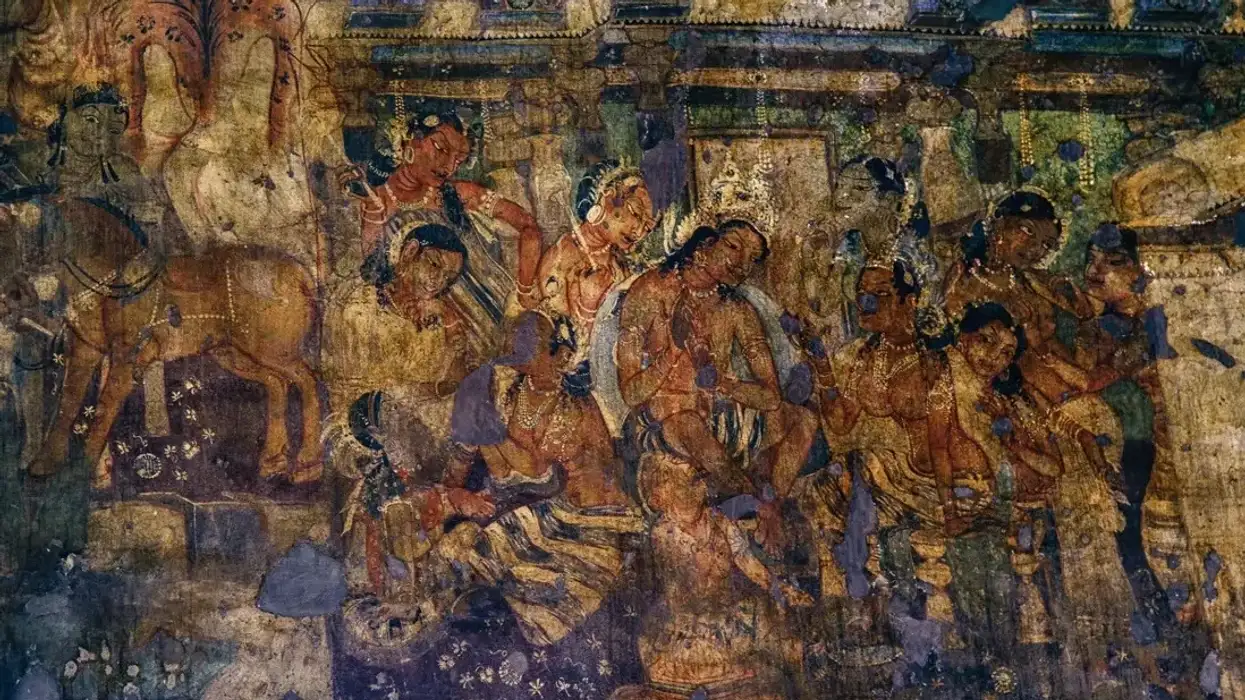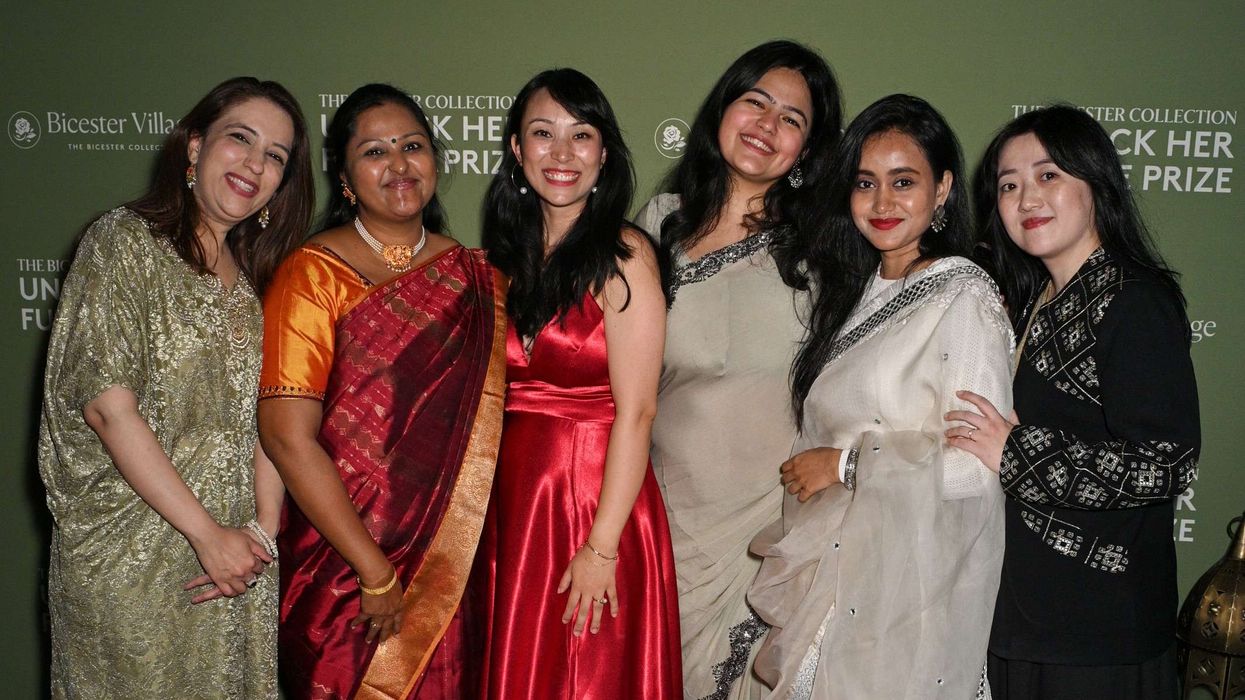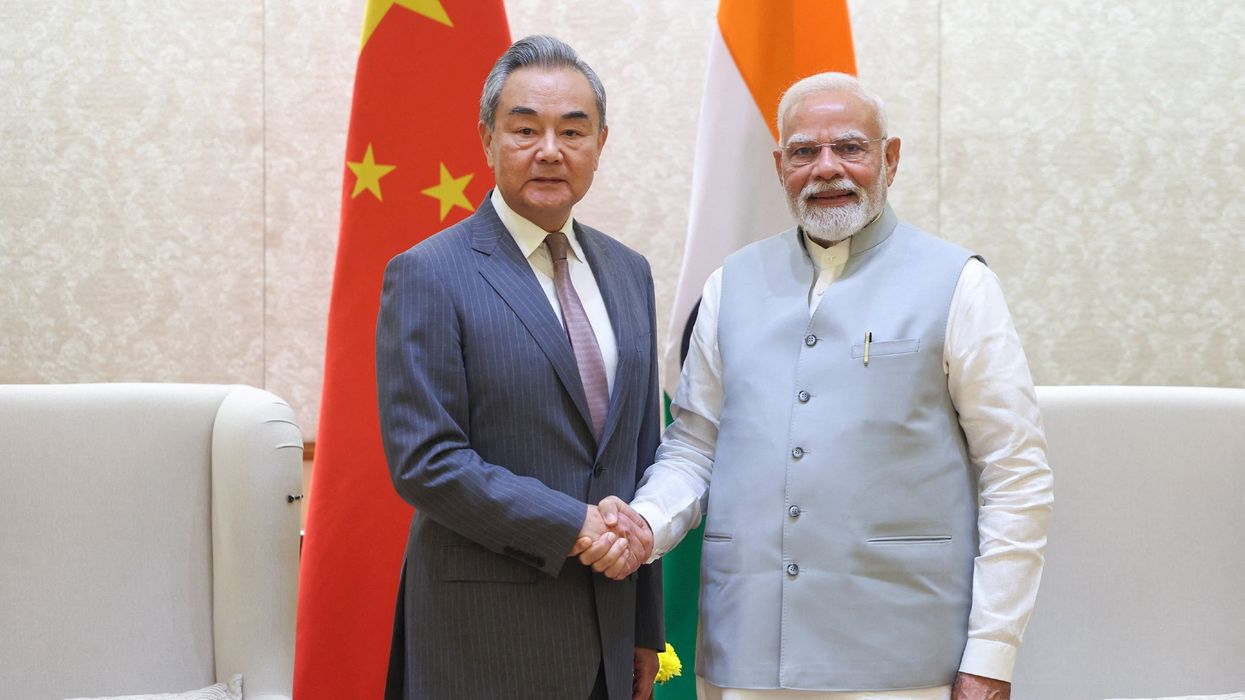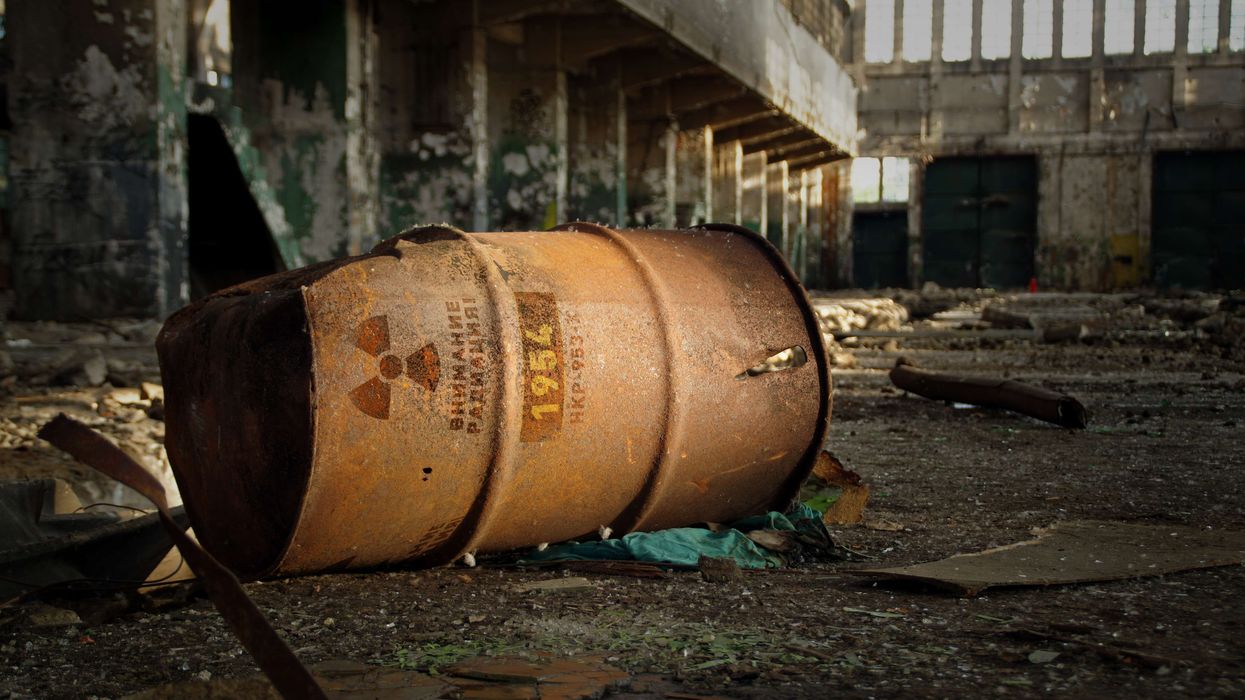IN WILLIAM DALRYMPLE’S new book on India, the discovery of the Ajanta Caves in the Aurangabad district of what is now Maharashtra state in western India is written up like an exciting thriller.
“In the early summer of 1819, a British hunting party was heading through thick jungle near Aurangabad in the Deccan when the tiger they were tracking disappeared into a deep ravine,” he writes in The Golden Road: How Ancient India Transformed The World.
Dalrymple sets the scene before going on to explain the significance of the find: “Leading the party was Captain John Smith, a young cavalry officer from Madras. Beckoning his friends to follow, he tracked the pugmarks down a semi-circular scarp of steep basalt and hopped across the rocky bed of the Waghur river. He then made his way slowly up through the bushes at the far side of the steep horseshoe-shaped amphitheatre of cliffs. Halfway up, Smith stopped dead in his tracks.
“The pug prints led straight past an opening in the rock face. But the cavity was clearly not a natural cave or a rivercut grotto. Instead, despite the long grass, the all-encroaching creepers, pepper vines and thick, thorny undergrowth, Smith could see that he was looking at a man-made façade cut straight into the rock face. The jagged slope had been painstakingly etched away into a perfect portico. It was clearly a work of great sophistication. It was equally clear that it had been abandoned for centuries.
“A few minutes later, the party made their way gingerly inside, as Smith held aloft a makeshift torch of burning dried grass and his companions clutched their muskets. A long hall, a hundred feet long by forty feet wide, led right into the living rock, flanked on either side by thirty-nine octagonal pillars. At the apse-shaped end rose the circular dome of a Buddhist stupa carved, like everything else, out of the solid rock of the mountain.”
Dalrymple is skilled at bringing the past to life: “Through the gloom, the officers could see the shadowy outlines of ancient murals.
“On the pillars were figures of orangerobed monks with white haloes standing on blue lotuses, while on the rock walls were painted panels filled with elaborate crowd scenes, rather as if a painted scroll had been rolled out along the wall of the apse. In the light of the flickering flame, the officers could dimly make out what they later described as ‘figures with curled wigs’.
“Crunching over a human skeleton and other debris dragged into the cave by generations of predators and scavengers, the party advanced step by step until they reached a pillar at the far end of the hall, next to the stupa. There Smith got out his hunting knife and inscribed over the body of a heavenly being the words: ‘JOHN SMITH, 28th CAVALRY, 28 April 1819’.”
The discovery brought a stream of visitors: “In the decades to come, first other hunting parties, then later groups of archaeologists and Indologists, followed in Smith’s footsteps through the jungle of the Western Ghats to Ajanta as word spread that in this most remote spot lay thirty caves which collectively amounted to one of the great wonders of the ancient world. Two of the caves – Cave 9 and Cave 10 – were soon recognised as some of the oldest completely intact man-made rooms in Asia: from palaeographic evidence, scholars believe they were dug out between 90 and 70 bce, and so completed several generations before Augustus started rebuilding Rome.”
This was no ordinary find: “On the walls of the caves of Ajanta were found some of the most beautiful and ancient paintings in Buddhist art. Most of these dated from the fifth century ce, an otherwise lost Golden Age of Indian painting. Along with the frescoes of Pompeii and Herculaneum, the delicate murals of Livia’s Garden House outside Rome and of Nero’s Golden House within the city’s walls, Ajanta’s walls represented perhaps the most comprehensive depiction of courtly life to survive from classical antiquity anywhere in the world.
“The Ajanta murals relayed Buddhist stories in images of supreme elegance and grace. Unlike the flatter art of later Indian miniature painting, here the artists used perspective and foreshortening to produce paintings of courtly life and ascetic renunciation, hunts, battles and erotic liaisons that rank as some of the greatest masterpieces of art produced by mankind in any century.
“Most beautiful of all are the two astonishing images which probably depict the compassionate Bodhisattvas, Avalokitesvara and Vajrapani, beings on the thresh[1]old of Enlightenment who consciously chose to delay crossing over in order to help others who are struggling on the same path. These beings of otherworldly beauty, elegance and compassion are shown with their eyes half closed, inward-looking, weightlessly swaying on the threshold of Enlightenment, caught in what the great historian of Indian art, Stella Kramrisch, described, wonderfully, as ‘a gale of stillness’.
“Even today, the colours of these murals glow with a brilliant intensity: lizardgreen, topaz-yellow, lotus-blue.”
Dalrymple writes: “In 2014, restoration work in Ajanta Cave 10 uncovered extraordinary new fragments of very early Buddhist murals, dating from the late first century bce – a full 500 years earlier than the celebrated murals of Cave 1. Cave 10 is now known to contain a supreme treasure not previously properly identified or studied: the oldest surviving murals telling the Jataka stories of the different lives of the Buddha.
“One particularly well-preserved scene shows a group of kings and deities venerating a Bodhi tree and a stupa. This is an image of the Buddha’s first sermon at Sarnath, with the tree taking the place of the Saviour: at this stage in Buddhist art it was considered unacceptable to depict the actual person of the Buddha, so his followers showed him represented at one remove through symbols such as a turban or an empty throne. It was through these narratives that they introduced non-Buddhists to the complex cosmologies and rich mythology of the new faith.
“This earliest surviving mural illustrated the life and teachings of a young prince named Siddhartha Gautama, the son of a king who ruled the small kingdom of Kapilavastu on the borderlands of India and Nepal in the mid-fifth century bce. At the age of twenty-nine, Siddhartha renounced his kingdom and became a sramana, ‘one who strives’, a spiritual reformer whose life’s work was to seek a solution to the age-old problem of human suffering. In his lifetime he was given the title ‘Shakyamuni’, the Sage of the Shakya clan. Today, we know him as the Buddha.”
The book deals with the spread of Buddhism. From the moment of his revelation, “the Buddha wandered through northern India teaching his fundamental ideas that everything is impermanent and that desire brings only the most fleeting of pleasures. The material world is ultimately an illusion, said the Buddha, a dream from which everyone must sooner or later awaken. Material pleasures ‘are like a man who dreams of a fine house with fine gardens and luxurious delights. Yet when he awakens all of it vanishes. Distinctions of wealth and poverty, noble and common, are like a dream.’
“The Buddha also taught his own solution to this problem: the dharma or moral path to the cessation of both desire and suffering. He passed on this message of remarkable emotional simplicity and clarity not in the complex Sanskrit of the Brahmins, but instead in the common Prakrit vernacular of the ordinary people.
The exterior view of the Ajanta cave“The doctrine of the Buddha was at once a philosophy, an ideology and a method, a practical spiritual path of mental training and discipline that he assured his followers would free them from the pain inherent in existence.”
The importance of the discovery made by Captain Smith in 1819 is set into context: “Nowhere does this world of the Buddha come more dramatically to life than in Ajanta, its earliest surviving expression in paint. The murals take us to an ancient world so astonishingly lifelike that even today, even in reproduction, the images of the Buddha’s life can still make you gasp as you find yourself eyeball to eyeball with a watching monk who may have attended one of the early councils that gave shape to the Buddhist faith or with an Indian warrior who may have fought one of the battles over his relics.
“So faithfully lifelike and realistic are the faces of the people depicted, so direct are their expressions, that you feel that these have to be portraits of real individuals, glowing still with the flame of eternal life. There is none of the idealisation or otherworldliness you see in the later images of the Bodhisattvas. Instead there is something deeply hypnotic about the soundless stare of these silent, often uncertain, early Buddhist faces. Their fleeting expressions are frozen, startled, as if suddenly surprised by the King of Varanasi’s decision to loose his arrow or by the nobility of the great elephant breaking through the trees.
“Indeed there is a profound sadness in the cycle of paintings, which are concerned with issues of justice, peace and non-violence: one image tells of a war breaking out over the Buddha’s relics – something that went totally against the grain of everything he taught. This is followed by three Jataka scenes which all tell of the unjust killing of an innocent: successively, the loving wife of a king who is falsely accused of trying to kill him; the shooting of a boy as he fetches water for his parents in the forest; and a noble elephant king murdered by hunters for his tusks. The viewer peers at these figures trying to catch some hint of the upheavals they witnessed and the strange sights they saw in ancient India. But these smooth, open, humane Indian faces, so full of melancholy, stare us down.”
Dalrymple says: “The most disconcerting thing about the people in these murals is that they appear so familiar. Two thousand years after they were painted, these faces convey with penetrating immediacy the character of the different sitters: the alert guard, the King caught in the excitement of the hunt, the obedient son fetching water. Indeed, so contemporary are the features, so immediately recognisable the emotions that play on the lips, that you have to keep reminding yourself that these sitters are not from our world, that they depict a court and jungle world of hunters and hunted, and Buddhist monks and devotees, that vanished from these hills more than two millennia ago.
The 100-foot hall with 39 octagonal pillars carved into the rock;“But perhaps the biggest surprise is that the world portrayed in the murals is only occasionally one of lonely self-sacrifice or of stark ascetic renunciation – a shavenheaded, orange-robed monk lost in meditation, a hermit seeking salvation in the gloom of a rock-cut grotto, or a group of wizened devotees straining to hear the words of their teacher. This is what we might expect in a Buddhist mural. What we do not expect are scenes showing a prosperous and multicultural palatial environment full of riches and pleasures and beauty, and thronged with courtiers wearing jewels and enjoying music, shady bowers and the many pleasures of youth.”
“Surprisingly, at Ajanta the Buddha tends to be shown less in his monastic milieu and more often in the princely environment in which he grew up,” writes Dalrymple. “Here among handsome princes and bare-chested nobles, princesses with tiaras of raat-ki-rani, Queen of the Night jasmine, languish lovelorn on swings and couches, while heavy-breasted and narrow-waisted dancing girls, dressed in diaphanous robes, jewels and girdles, perform beside lotus ponds, swaying to unheard music, ringing their ghungroo anklets. These court women wear little but spinels and chrysoberyl cat’s eyes; they hold nothing but empurpled ebony flywhisks of burnished gold; gleaming rubies the colour of peacocks’ blood flash against their dark skin.”
The author says that “the artists of Ajanta clearly saw nothing odd in this juxtaposition of monks and dancing girls, ascetics and princesses. There are no panels or boundaries in the Ajanta paintings beyond the physical borders of the cave, and the artists move from the world of the ascetic’s cave to the pleasure gardens of the royal court and back again without acknowledging any essential separation between the two.
“There is also a surprisingly international cast of characters in the murals. Recognisable among the crowds are many foreigners, including Persians, Parthians, Scythians, Ethiopians, Egyptians and even Greeks and Romans, each with distinct clothes, tunics, hairstyles, skin colours and drinking goblets. Even the pigments used in the paintings indicate international connections – the gorgeous blue, for example, was obtained from lapis lazuli imported from Badakshan. Ajanta was evidently built at the centre of a deeply globalised world.
“The earliest caves of Ajanta contain inscriptions which show that the whole enterprise of their excavation was the result of numerous small contributions, partly from pious monks and nuns, but also from local merchant guilds and craftsmen. The murals indicate that, by the time of Ajanta, India was not some self-contained island of Indianness, but already a cosmopolitan and surprisingly urban society full of traders from all over the world; in many cases it was the traders themselves who actually paid for these murals, such as the rich merchant Ghanamadada who, according to an inscription, donated the funds for Cave 12. To some extent, the murals may also have reflected the merchants’ taste, which could explain the near absence of asceticism or even monasticism in the murals.
“Either way, it is clear, the message of the Buddha was no longer restricted to any one caste or class or tribe. It was universal, and like later missionary religions was intended to be spread to the ends of the earth.”
The Golden Road: How Ancient India Transformed The World, by William Dalrymple is published by Bloomsbury. £30.













